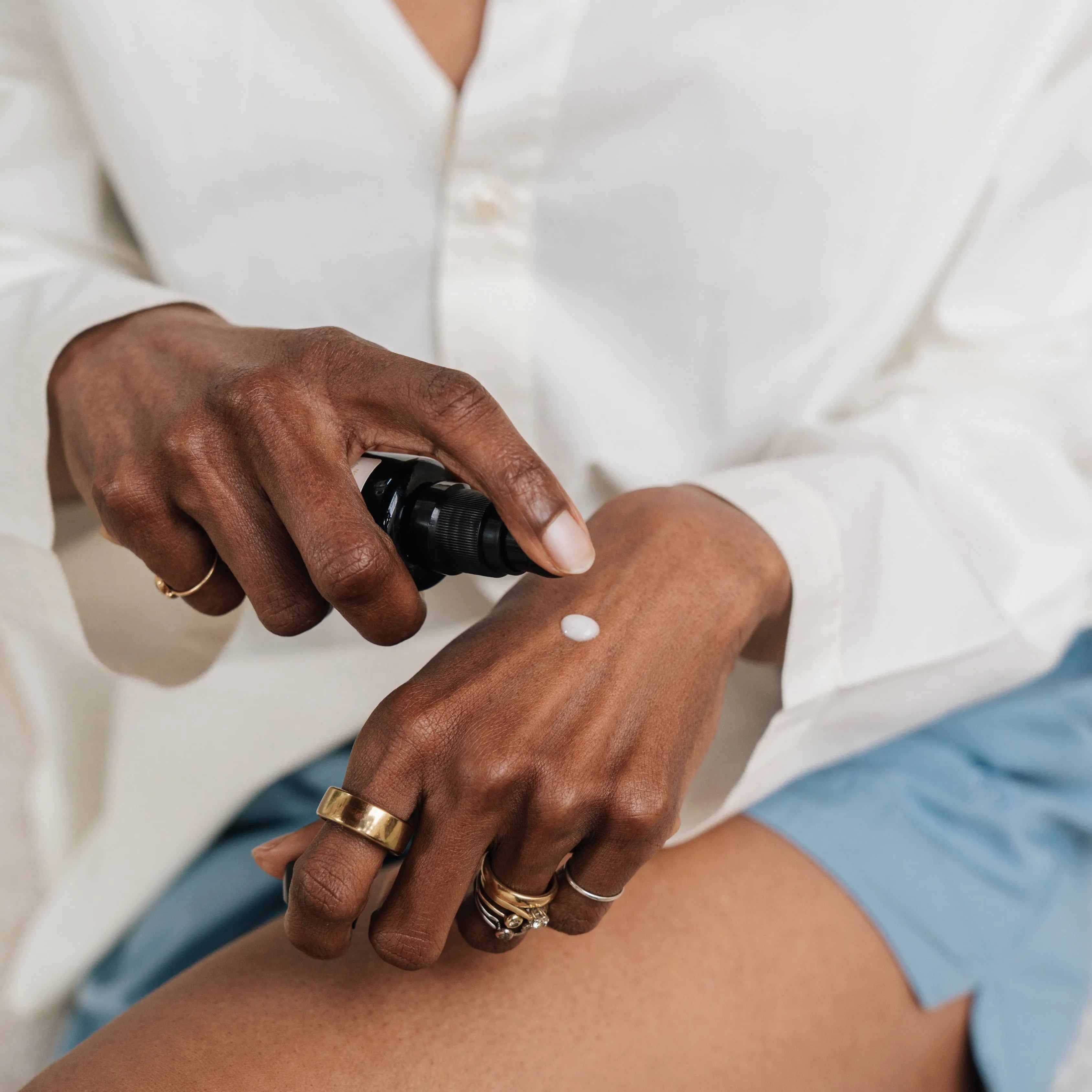What Makes Hyaluronic Acid So Special?
Hyaluronic acid is a skincare superstar, praised for its ability to hold up to 1,000 times its weight in water. Whether you’re new to Hyaluronic Acid or want to maximise its benefits, knowing how to use it correctly can make all the difference.
This step-by-step guide will show you how to incorporate hyaluronic acid into your routine and unlock its full hydrating potential.
Why Hyaluronic Acid Deserves a Spot in Your Routine
Hyaluronic acid isn’t just another skincare ingredient—it’s a game-changer for all skin types. Here’s what it can do for you:
-
Hydrates Deeply: Draws moisture into the skin for a plump, radiant complexion.
-
Boosts Elasticity: Supports the skin’s structure to reduce the appearance of fine lines.
-
Protects the Skin Barrier: Keeps environmental aggressors at bay while locking in hydration.
How to Use Hyaluronic Acid Like a Pro
Step 1: Cleanse Your Skin
Start with a gentle, pH-balanced cleanser to remove dirt, oil, and makeup. This prepares your skin to absorb the benefits of Hyaluronic Acid.
-
Tip: Avoid cleansers with harsh sulfates, as they can strip the skin and make it harder for HA to bind moisture.
Step 2: Apply to Damp Skin
Hyaluronic acid is a humectant, meaning it draws moisture from its surroundings. Applying it to damp skin enhances its ability to hydrate.
-
How: After cleansing, lightly mist your face with water or leave it slightly wet before applying Hyaluronic Acid serum.
Step 3: Pair with The SABI’s Active Nutrient Serum
Our Active Nutrient Serum, packed with hyaluronic acid and adaptogenic botanicals, is perfect for locking in hydration while brightening and rejuvenating your skin.
-
Why it works: The serum’s lightweight formula absorbs quickly, delivering Hyaluronic Acid’s benefits deep into the skin layers.
Step 4: Seal in the Hydration
Finish with a moisturiser to lock in the moisture that hyaluronic acid attracts. Look for ingredients like ceramides or plant oils for added barrier support.
-
For Morning Use: Follow up with sunscreen to protect your skin from UV damage and maintain hydration throughout the day.
-
For Evening Use: Use a rich night cream for overnight repair.
Pro Tips for Using Hyaluronic Acid
-
Don’t Skip Moisturiser
Without a moisturiser, Hyaluronic Acid can pull moisture out of your skin instead of drawing it in, leaving your skin feeling dry. Always seal it in with a hydrating product. -
Pair with Complementary Ingredients
Combine Hyaluronic Acid with vitamin C for brightening or ceramides for strengthening the skin barrier. Avoid layering it with exfoliants like AHAs or BHAs at the same time to prevent irritation. -
Use Twice Daily
Hyaluronic acid is gentle enough to use morning and night, but consistency is key for long-term results.
Common Myths About Hyaluronic Acid
Myth 1: It Only Works for Dry Skin
Reality: While Hyaluronic Acid is excellent for hydrating dry skin, it’s equally effective for oily, combination, and sensitive skin.
Myth 2: It Can Replace Moisturiser
Reality: Hyaluronic acid is a hydration booster, not a standalone moisturiser. Always layer it with a cream or lotion for best results.
Myth 3: It Stops Working in Humid Conditions
Reality: Hyaluronic Acid can still draw moisture from deeper skin layers, even in humid climates. However, pairing it with moisturisers ensures optimal performance.
Mistakes to Avoid
-
Applying to Dry Skin: Without moisture, Hyaluronic Acid has nothing to bind to, which can result in dryness.
-
Skipping Sunscreen: UV rays dehydrate the skin and break down Hyaluronic Acid, so sunscreen is non-negotiable.
-
Overloading Actives: Too many active ingredients can irritate your skin. Introduce Hyaluronic Acid gradually if it’s new to your routine.
Transform Your Skincare Routine with Hyaluronic Acid
When used correctly, hyaluronic acid can revolutionise your skincare routine. From delivering deep hydration to supporting the skin barrier, it’s a versatile ingredient that benefits every skin type. With the right application steps and complementary products like The SABI’s Active Nutrient Serum, you’ll unlock the full potential of this hydration hero.
References
-
Papakonstantinou, E., et al. "Hyaluronic Acid: A Key Molecule in Skin Aging." Dermatoendocrinology, 2012. Read more
-
Lupo, M. P., & Cole, A. L. "Best Practices for Hydration." Dermatology Times, 2021.
-
Han, Y., et al. "How to Maximise Skincare Ingredient Synergy." Clinical Dermatology, 2022.
HORMONAL & PROUD
Created as a brand to help women navigate the toughest moments in pregnancy, childbirth, postpartum — and practically every stage of life –– The SABI aims to change the narrative around our hormones from one of taboo, embarrassment, and loneliness to awareness and pride.
As more than a wellness brand, The SABI offers a carefully-crafted line of products to carry you through your hormonal journey, including rituals, supportive tools, and ancient herbal remedies that have been tested time and time again by women and now come backed by medicine.
The SABI is a blend of science and nature conceived by women who have experienced the joys and deep struggles of bringing a child into the world, the pains of a heavy, difficult period, miscarriage, and difficulty conceiving.
We offer you an invitation to get to know your body and its cycles better –– an invitation to really understand what is going on inside. Learn to use your hormonal cycle to your advantage no matter your stage of life, and know that you can support and balance your hormone levels. Look for the right sources of information. Know that there is help, and know that you’re supported.
DISCLAIMER
The SABI blog and articles are not meant to instruct or advise on medical or health conditions, but to inform. The information and opinions presented here do not substitute professional medical advice or consultations with healthcare professionals for your unique situation.
















